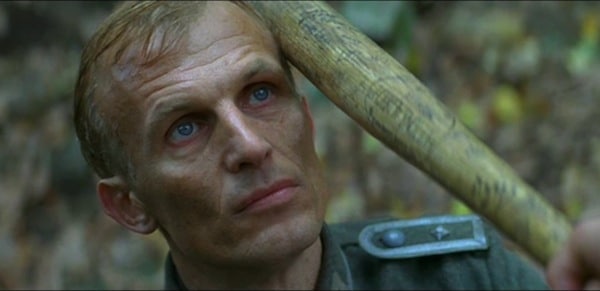Reservoir dogs
Reservoir dogs, directed by Quentin
Tarantino is a film about a jewelry store robbery gone wrong. It has a non-linear plot structure and does
not come together until one of the last scenes. Tarantino doesn’t stray far
from his love of violence, with multiple shooting scenes as well as torture. This film is most unique in its strange
balance of scenes. The scenes, in which violence plays a large role and are
hectic, are contrasted nicely with long monologues or conversations between
characters. These long dialogue scenes did get somewhat tedious, however they
were contrasted nicely with the up-beat, dramatic scenes. In addition, the
non-linear plot allowed for Tarantino to jump around and fit in different parts
of the story when he chose to do so. One scene in particular which I felt was
well done was this scene.
This scene starts immediately following
the credits, the viewer has no prior warning and no context, this helps add to
the drama and intensity. In addition the camera shot does not show the road,
just the two men, and the driver, Mr. White, isn’t looking at the road. This
again adds to the drama. Lastly what makes this scene special is how the
dialogue contrasts the chaos of what the viewer sees. This helps in this scene
and in many others, to balance out the violence.
Inglorious
Basterds
Inglorius Basterds is
Tarantino's take on the holocaust and Europe in the 1940s. He remains
relatively historically accurate until the ending scene in which Hitler is
blown away by a baragge of bullets. Tarantino uses drawn out conversation and
framing to build tension. The movie overall builds tension up until the final
scene in which hell breaks loose. Tarantino's framing can be seen in this
scene.
Tarantino uses 2 main shots in this. He has a close up of the
german's face, which includes a slow zoom. This shot cuts back and forth with a
slow zoom of a dark space. This dark space creates a feeling of mystery and
uncertainty. The suspense builds as we as the viewer get deeper and deeper into
the dark space. Tarantino creates a strange dynamic in this scene. He makes the
audience empathize with the German, even though we want to see him as the
enemy. We are just as uncertain as to whats behind that entrance as the German.
When the "Bear Jew" finally does emerge,
Tarantino immediately zooms out to give the audience a full look at
the new character. We then see the German through his eyes instead of a third
person view. This new camera angle is shot at a high angle, showing that the
German is powerless.
Another way Tarantino builds tension is through long
conversations. This can be seen multiple times throughout the movie. Many times
it is the conversation itself, rather than the film techniques which helps add
tension, but Tarantino is able to use a combination of both.


No comments:
Post a Comment